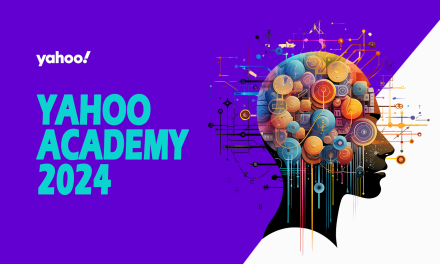Three areas where an AI-first approach has become a game-changer in marketing
We are in a hugely exciting era for mobile marketing. New technologies are transforming the way we work, opening up new opportunities in everything from creative to customer engagement. GenAI (Generative AI) is top of the agenda, rapidly making the move from hype to reality.
According to a WFA (World Federation of Advertisers) survey, 78% of brand owners are already using GenAI in their marketing strategies or plan to use it soon. The immediate benefits perceived include improved productivity and efficiency (89%), reduced costs (76%) and improved creativity (46%). Dataiku predicts that spending on AI solutions in Southeast Asia will reach USD $646 million in 2026.
Most importantly, consumers are strongly in favour of AI if it delivers a faster and better interaction. In one US study, 48% of respondents said they would interact with AI more frequently if it made brand experience more seamless, convenient and consistent.
Taking an AI-first approach to marketing campaigns enables creativity and hyper-personalisation at a scale that wasn’t imaginable before. Here are three areas where GenAI has become a game-changer.
1. Driving creativity and engagement
AI is driving much more thoughtful and compelling mobile marketing experiences. GenAI can create any kind of content, from text to music, images and video. It’s getting so realistic that AI images of people are becoming hard to distinguish from actual photos. It can also generate and serve personalised, dynamic creative to targeted consumers, making messaging highly immediate and relevant.
Consequently, AI took centre stage at this year’s recent Cannes Lions festival. Several AI ads took out Grand Prix awards, including French telco Orange’s WoMen’s Football, which used deepfake technology to shine a line, and Latin America’s e-commerce company, Mercado Libre’s “Handshake Hunt” Black Friday campaign which used AI to generate deals within TV content.
OpenAI’s text-to-video tool Sora (released earlier this year) was also a hot topic with ad veteran David Droga sharing his early experiences of using the tool on a panel where he observed it was reshaping the way her thought about creativity. AI is certainly an area the big ad agencies are investing in; during the festival it was also announced that WPP would be rolling out an AI-powered production studio, whilst Havas revealed it would be making a $400+ million investment in AI.
Already at InMobi, Generative AI has emerged as the driving force behind our quest for compelling and thoughtful experiences and are using it to drive both the aesthetic appeal of our ads, and to drive audience engagement on a deeper, more personalized level. For example, we’re using AI-generated music and AI-generated image assets in rich media, as well as enhancing customer experience with AI chatbots.
2. Efficiencies gained in mobile marketing
There are fears that AI will start to replace humans. But what we’re seeing instead is that it’s empowering teams: taking over time consuming and repetitive tasks. This frees up teams to focus their energies on far more meaningful and impactful areas.
For example, at InMobi we’ve incubated and deployed several AI resources at the heart of our strategic initiatives. By harnessing the power of machine learning and generative algorithms, we’ve decreased our turnaround time for highly complex ad development by 75%. This has been possible because we’re focused on upskilling our existing teams to use these tools.
AI can also deliver much faster and smarter outcomes in programmatic. By harnessing real-time data, algorithms can adjust bids and targeting on-the-fly, optimising ROI on ad spend. Google claims that AI-driven campaigns achieve 18% higher conversions for the same cost per action than non-AI driven campaigns.
3. Elevating customer experiences
Customer support is pivotal in building brand loyalty, enhancing customer experience (CX) and engagement and driving positive word-of-mouth. According to a Gartner research study, GenAI can drive a 33% increase in customer satisfaction compared to traditional customer service methods. Gartner predicts that by 2025, 80% of customer service organisations will be applying GenAI to improve CX.
One successful example is IKEA’s AI chatbot “Billie”. In its first two years of operations, it handled 47% of customer queries. This has allowed its parent company, Ingka group, to train 8,500 call centre workers as interior design advisors.
Right now, we’re merely scratching the surface of GenAI’s potential. Forbes ad tech advisor Ivan Guzenko observes that we are “witnessing a shift in the paradigm of what’s possible and what’s not possible for AI in advertising”.
But what’s critical is being open and honest about how organisations are leveraging AI. Behind the scenes, many organisations are creating superior processes and user experiences that are not always advertised as AI-enabled. To retain and build trust, we must be transparent about our use of this technology and ensure ethical guardrails are in place.
Marketers can no longer afford to sideline AI, but they must use it responsibly and as a force for good. Ultimately, leveraging AI is imperative for marketers. It’s our imagination that holds the key to unlocking its full potential in the marketing realm.


















